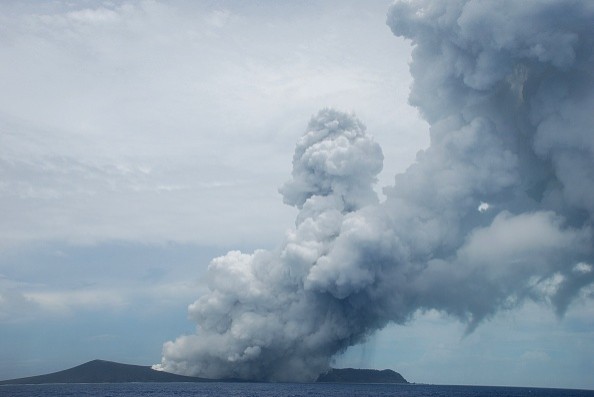As a result of the Tonga eruption, Antarctica was flooded with vibrant hues. Scientists claim that the volcanic twilight "afterglows" are caused by aerosols released into the stratosphere in January.
Tonga Afterglow

The "afterglow" of the Tongan eruption has caused Antarctica's vast, white continent to be covered in brilliant pink and plum colors.
Scientists attribute the recent reports of abnormally flaming skies in Australia and New Zealand to an increase in aerosols sent into the stratosphere due to the January Hunga Tonga-Hunga Ha'apai volcanic eruption.
Why is this happening?
When researchers in Antarctica saw that the same thing was occurring on the world's southernmost continent, they informed New Zealand's National Institute of Water and Atmospherics (Niwa) about the occurrence.
Stuart Shaw, a science technician with Antarctica New Zealand, who is stationed at Scott Base for the winter and who was able to capture stunning images of the blazing skies, explained that typically in the middle of winter, Antarctica is nearly continuously dark, aside from a slight "nautical twilight" at around midday, which means the horizon is faintly visible in good conditions.
"However, this year, we were treated to an awe-inspiring performance, prompting most station staff to grab jackets and dash outside with their cameras to take in the stunning colors.
Shaw claimed, "Believe it or not, I haven't changed these colors either; they are essentially how we observed them. "It's amazing,"
According to Nava Fedaeff, a forecaster at Niwa, data from satellite lidar or laser radar reveals an abundance of aerosols in the stratosphere over Antarctica that wasn't present before the eruption.
"For months following a volcanic eruption, stratospheric aerosols cycle the globe, scattering and bending light as the sun descends or ascends below the horizon, producing a glow in the sky with colors of pink, blue, purple, and violets."
Also Read: Geologists Still Continues to Investigate the Historic Tonga Eruption
Remnants of Tonga's Eruption
The haze and cloudiness along the route of light reaching the stratosphere determine the color and intensity of the volcanic twilights, or "afterglows," she added.
We "share the same sky," despite Tonga and Antarctica being separated by some 7,000 kilometers, according to Jordy Hendrikx, chief science adviser for Antarctica New Zealand.
"Much of the work we fund attempts to understand those processes in the atmosphere, seas, and ecosystems and better understand the link between Antarctica, New Zealand, and the rest of the planet."
How Eruptions Affect the Atmosphere

While volcanic gases interact with the atmosphere in various ways, the climate is most significantly impacted by the transformation of sulfur dioxide (SO2) into sulfuric acid (H2SO4).
Volcanoes can affect climate change; during major explosive eruptions, enormous amounts of volcanic gas, aerosol droplets, and ash are injected into the stratosphere; injected ash rapidly falls from the stratosphere and has little effect on climate change; however, volcanic gases like sulfur dioxide can cause global cooling, while volcanic carbon dioxide, a greenhouse gas, has the potential to promote global warming.
Sulfate aerosols can reduce ozone levels and chill climates.
The conversion of sulfur dioxide to sulfuric acid, which quickly condenses in the stratosphere to create fine sulfate aerosols, has the most effects on climate from volcanic injections into the stratosphere. The Earth's lower atmosphere, or troposphere, cools due to the aerosols' increased ability to reflect solar energy into space.
Related Article : Researchers Terrified as "World's Most Active Volcano" Slowly Rises from the Depths of a New Zealand Lake
For similar news, don't forget to follow Nature World News!
© 2025 NatureWorldNews.com All rights reserved. Do not reproduce without permission.




